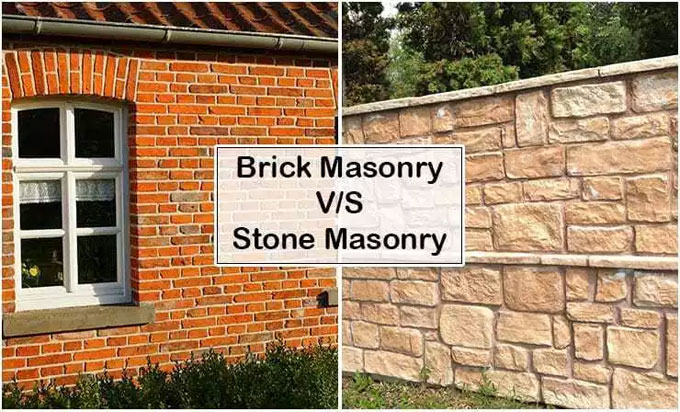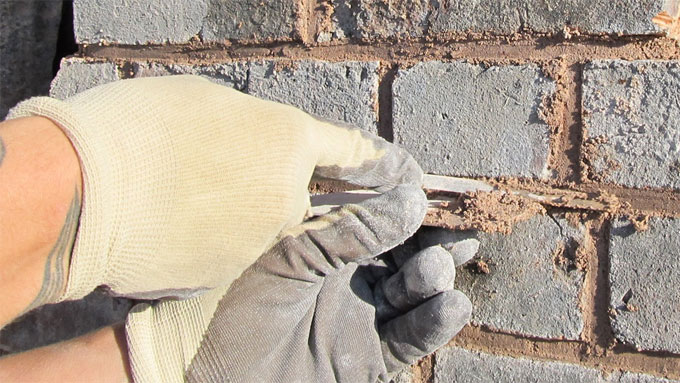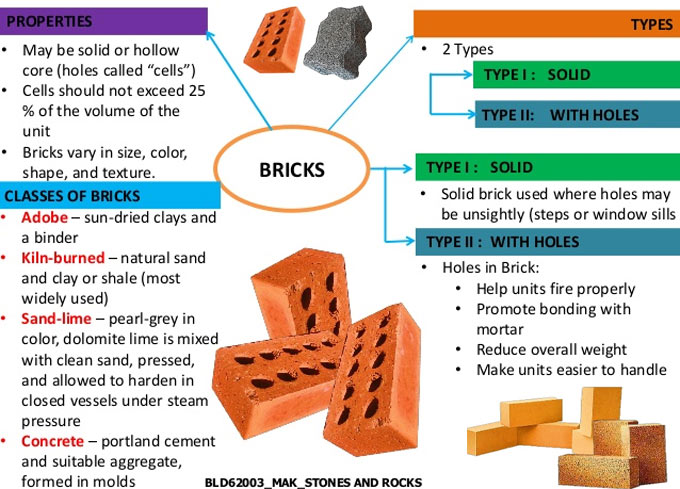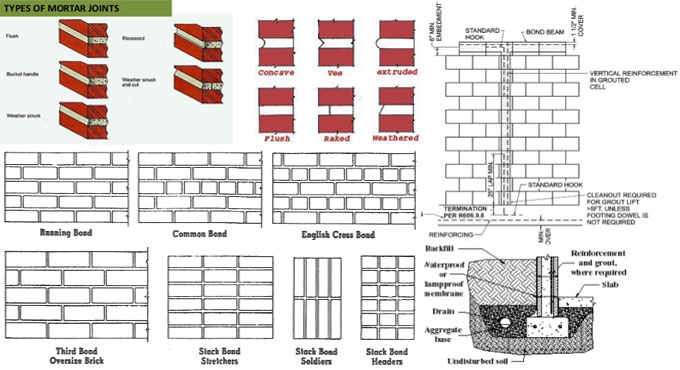Masonry belongs to the method of setting out one masonry unit i.e. bricks and stones, concrete blocks etc. over another by applying mortar uniformly to build up a member or an component of the building.
Masonry buildings particularly made of stone masonry have strong resistance capacity against harsh weather and they are not easily injured with physical or ecological forces. Reinforced masonry also protects seismic forces and the hurricane.
Given below, some basic differences among stone and brick masonry
Stone Masonry:
• Stone is extensively utilized for both residential, public buildings as well as historical buildings because of it’s sturdiness, strength and the superior weather-resisting capacities.
• The longevity of brick masonry is less with regard to stone masonry.
• The longevity of brick masonry is less with regard to stone masonry.
Brick Masonry:
• Conversely, Brick contains much less strength, stability and weather-resisting capacities.
• The longevity of stone masonry is greater with regard to brick masonry and if the construction process is accurate it’s durability remains for 100/2000 years.
• The longevity of stone masonry is greater with regard to brick masonry and if the construction process is accurate it’s durability remains for 100/2000 years.
Stone Masonry:
• Owing to its extreme crushing strength, stone is mostly utilized in the erection of piers, docks, dams, and other marine structure.
• Stones come in irregular shapes and as a result the process becomes complicated to provide perfect bond in stone masonry and the strength is reduced.
• Dead load of stone masonry is higher.
• Stones come in irregular shapes and as a result the process becomes complicated to provide perfect bond in stone masonry and the strength is reduced.
• Dead load of stone masonry is higher.
Brick Masonry:
• Bricks are not recommended for the construction of above structures.
• Bricks are homogeneous and standard in shape and consequently exact bond can be provided easily and the strength remains superior.
• Dead load of brick masonry is fewer.
• Bricks are homogeneous and standard in shape and consequently exact bond can be provided easily and the strength remains superior.
• Dead load of brick masonry is fewer.
Stone Masonry:
• When uncovered to weather, no dampness occurs on bricks.
• Stones are applicable in sewage devoid of any protective coat.
• Stone masonry does not have good fire resisting strength with regard to brick masonry.
• Stone walls release more quantity of heat and make sitting in the room uncomfortable.
• Stone masonry is good insulation to air-transmitted noise.
• Stones are applicable in sewage devoid of any protective coat.
• Stone masonry does not have good fire resisting strength with regard to brick masonry.
• Stone walls release more quantity of heat and make sitting in the room uncomfortable.
• Stone masonry is good insulation to air-transmitted noise.
Brick Masonry:
• When bricks are uncovered to weather, damp occurs on them and it results in breaking up the masonry and other components of building.
• If specific salts are found in the sewage, they react chemically with uncovered brick and when brick-work comes in contact with sewage, it should properly plastered, otherwise it becomes poor.
• Brick masonry has strong fire resistance capacity with reference to stone masonry.
• Bricks engross less quantity of heat.
• Brick masonry contains low insulation to air-transmitted noise.
• If specific salts are found in the sewage, they react chemically with uncovered brick and when brick-work comes in contact with sewage, it should properly plastered, otherwise it becomes poor.
• Brick masonry has strong fire resistance capacity with reference to stone masonry.
• Bricks engross less quantity of heat.
• Brick masonry contains low insulation to air-transmitted noise.
Stone Masonry:
• The application of stone is confined to only hilly areas as stones can be easily accessible here.
• The masonry built up with stones requires higher cost if it is away from sources.
• Stones are bigger in size; for this reason the least thickness of a stone wall normally remains greater than 35 cm (14”).
• Thick mortar joints are provided in stone masonry and as a result lager quantity is required for mortar.
• The masonry built up with stones requires higher cost if it is away from sources.
• Stones are bigger in size; for this reason the least thickness of a stone wall normally remains greater than 35 cm (14”).
• Thick mortar joints are provided in stone masonry and as a result lager quantity is required for mortar.
Brick Masonry:
• Bricks can be easily accessible in most of the places excluding hilly and rocky areas.
• The masonry built up with bricks requires less cost.
• Bricks walls are easily constructed in small thickness of even 13 cm, 23 cm and so on.
• Mortar joints are thin in brick masonry and for this reason less mortar is needed.
• The masonry built up with bricks requires less cost.
• Bricks walls are easily constructed in small thickness of even 13 cm, 23 cm and so on.
• Mortar joints are thin in brick masonry and for this reason less mortar is needed.




